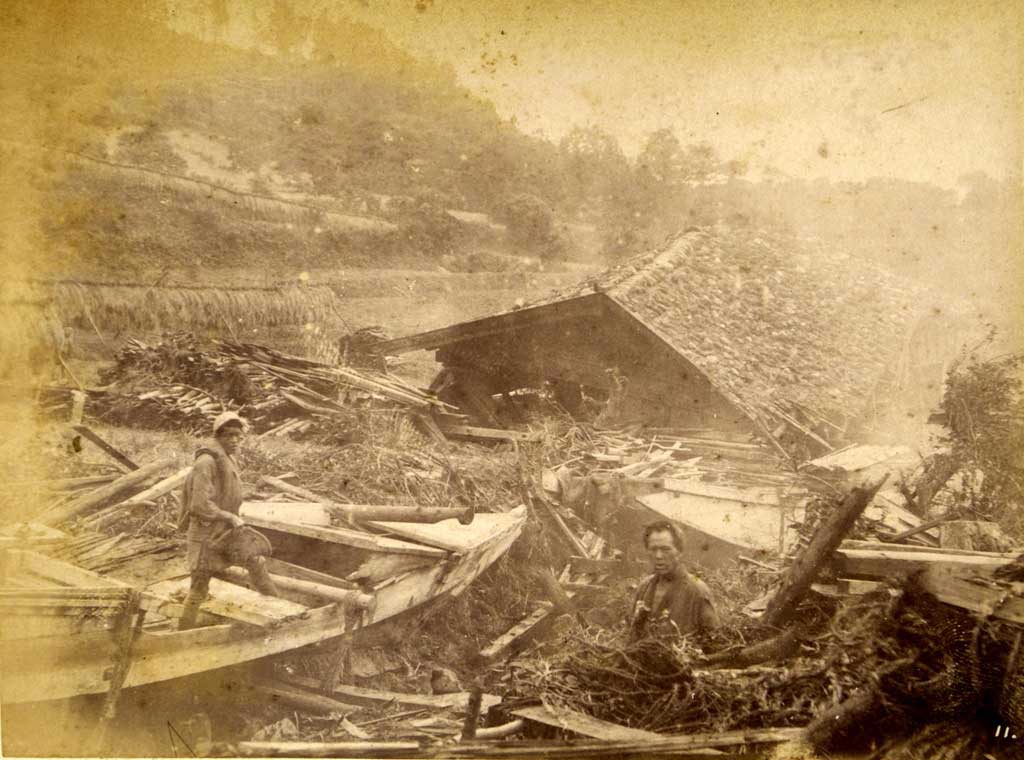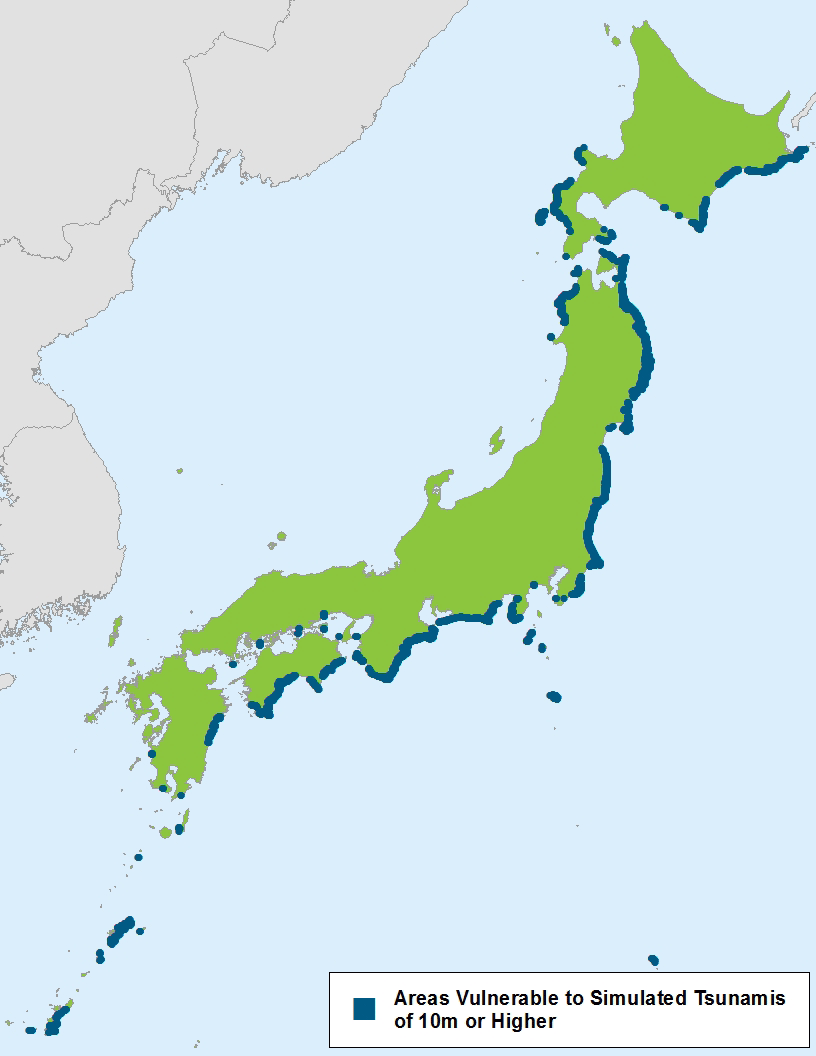On June 15, 1896, an M8.0 earthquake struck just over 100 miles off the coast of Japan, unleashing a destructive tsunami. This was not an isolated incident; many areas along Japan’s coastline are at risk of being significantly affected by tsunamis of 10 meters or higher, depending on their topography.
Japan has a few significant tsunamis on record. In 1703, for example, the M8.2 Genruko earthquake, located in what is today the Tokyo region, triggered a tsunami whose maximum height was just over 10 meters and claimed more than 5,000 lives. The Great Kanto earthquake of 1923 was followed by a tsunami of about 12 meters, which claimed thousands of lives and caused major destruction along the Sagami Bay and Boso and Izu Peninsulas and the Izu Islands. And although rare, tsunamis of extreme height have struck Japan, causing widespread destruction. The most recent was the 2011 Tohoku tsunami, which reached nearly 40 meters in some areas.
The Meiji-Sanriku earthquake in 1896 occurred in the same area as the Tohoku earthquake in 2011. Shaking from the 1896 event was not widely felt but the tsunami destroyed nearly 9,000 homes and claimed more than 22,000 lives, making this one of the most damaging earthquakes in Japan’s history.
The earthquake struck at 19:32 (local time) off the coast of Iwate Prefecture, Honshu, immediately west of the Japan Trench, but caused only mild shaking and no damage—and did not lead people to expect a tsunami. The velocity of the rupture was unusually slow, but a slope failure triggered a significant tsunami, the first wave of which struck the coast with almost no warning about 35 minutes after the mainshock had passed almost unnoticed.

The nature of the coastal topography also impacted the devastation. The region has a ria coastline, with many coastal inlets that can constrict and elevate tsunami waves as they advance. Waves reaching as high as 38 meters in the Ryouri village of Miyagi set a record that would not be broken until the Tohoku event in 2011. As far away as Hawaii the tsunami reached heights of up to 9 meters, destroying homes and wharves.

Despite the elaborate network of tsunami barriers and floodgates constructed to protect coastal cities following the Sanriku earthquake in 1933, many areas along Japan’s coastline could be significantly affected by tsunamis of 10 meters or higher. Elevations above the peak water height of most tsunamis usually remain safe; note, however, that tsunamis can affect the water level along rivers and any subsequent flooding can affect areas farther inland than expected. The deep recesses in the coastline forming bays, or embayments, along Japan’s eastern coastline can also amplify the heights of tsunamis, as they did in 1896, allowing them to inundate farther inland.
Inland floods, typhoons, and earthquakes. Read “2018: Japan’s Year of Catastrophes”




